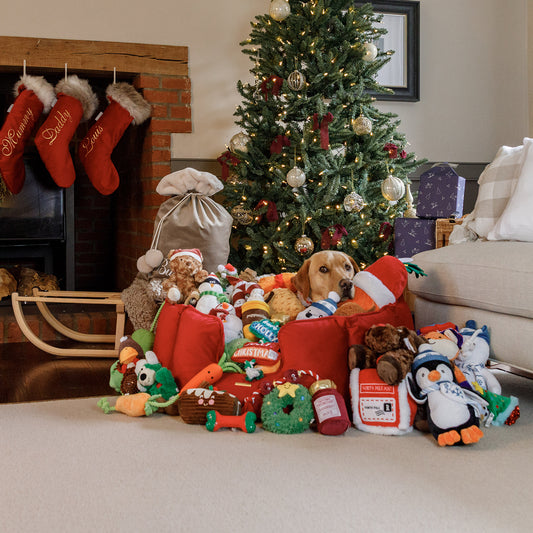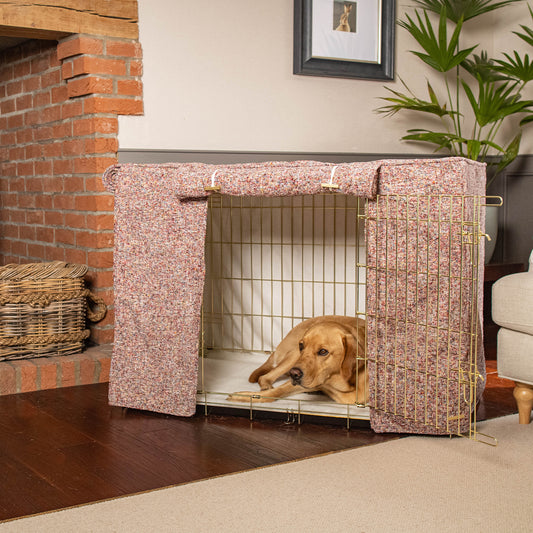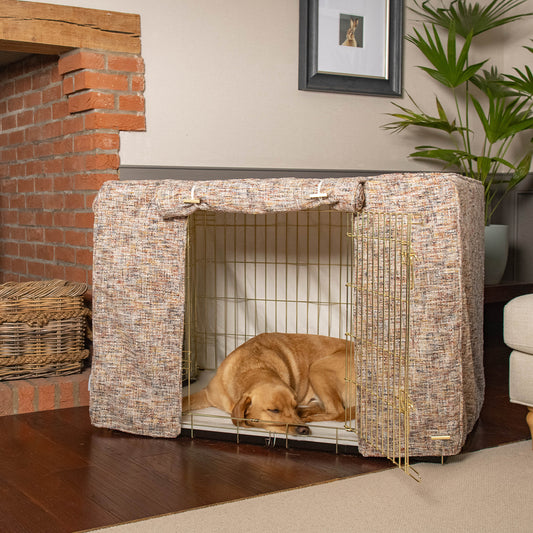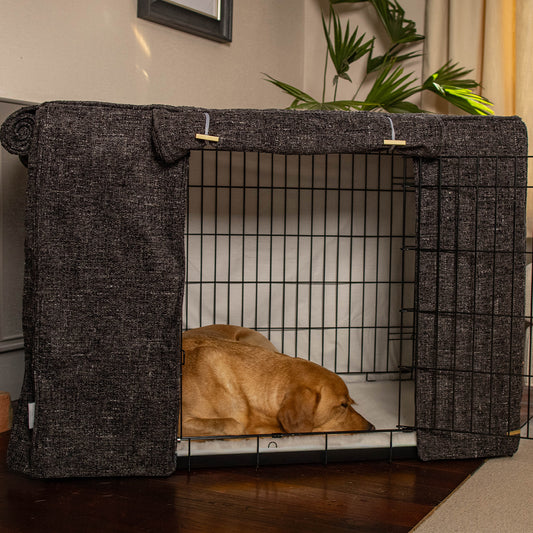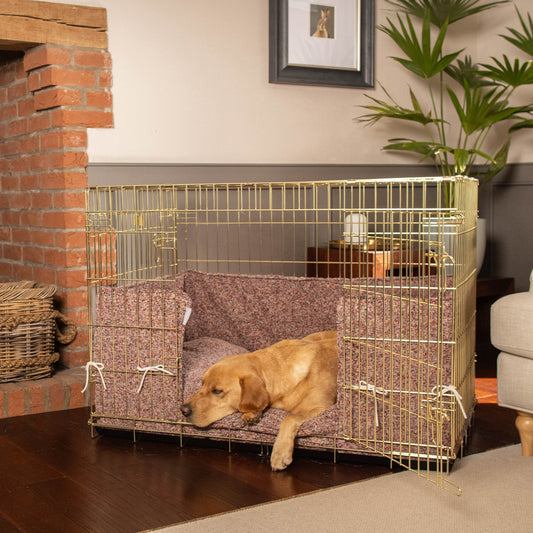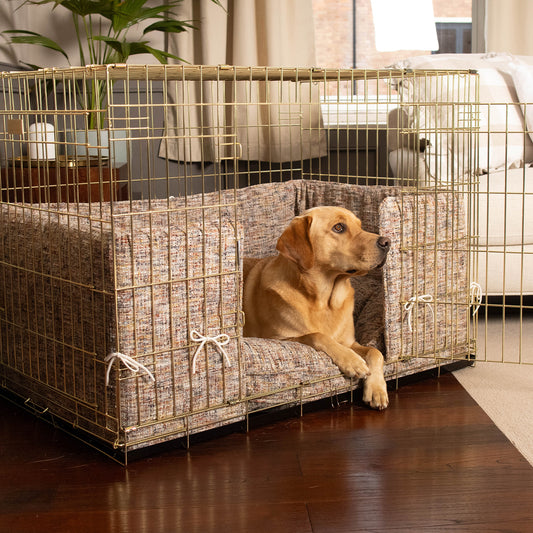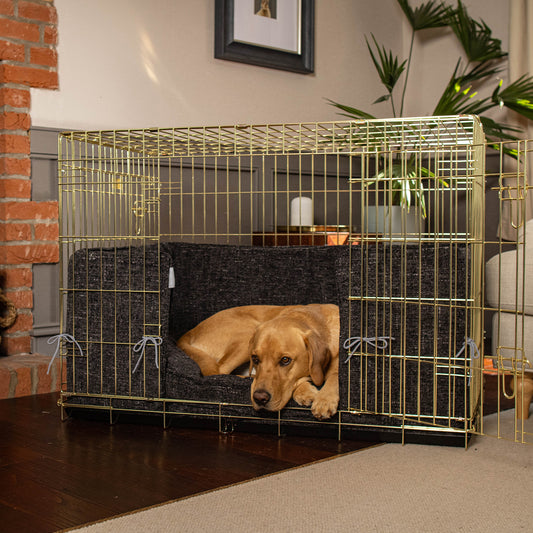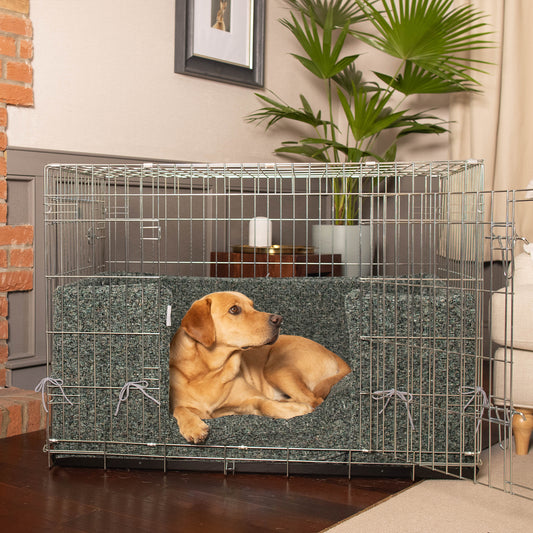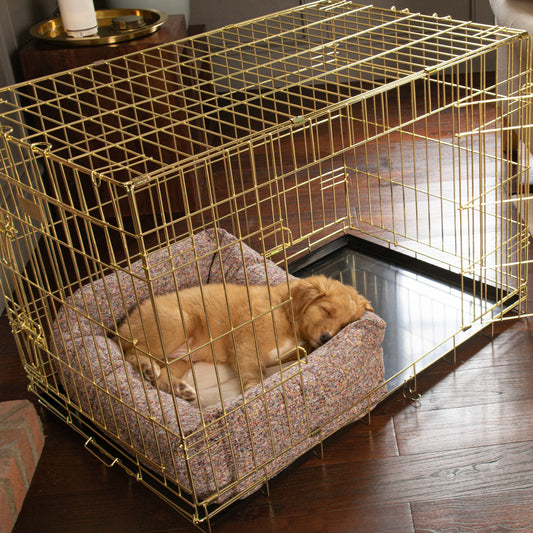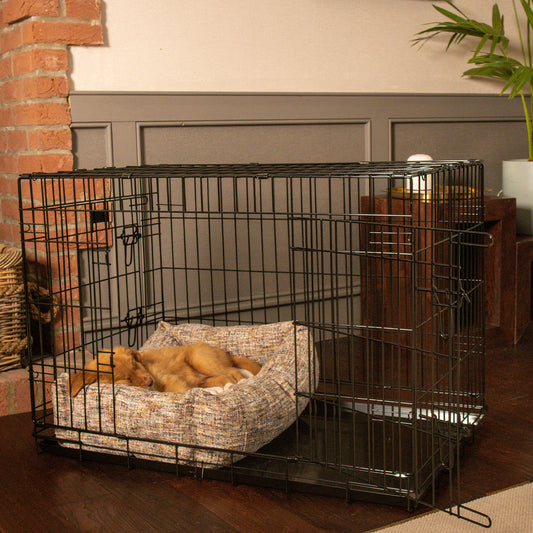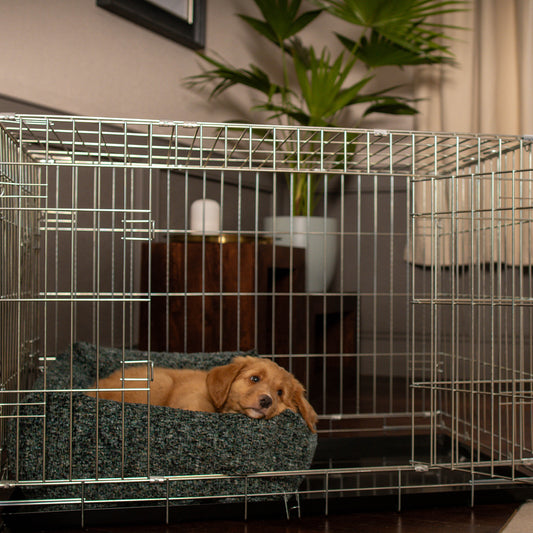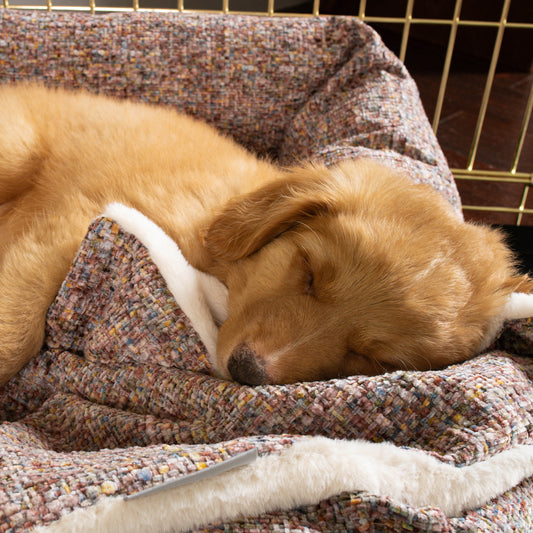The Cavachon, a cross between a Cavalier King Charles and a Bichon Frise, have become a very popular pet in recent years. Their friendly and playful nature mixed with their Teddy-like good looks make them a very popular choice of pet. The Bichon Frise genetics mean they have a low shedding coat and they’re great with children, making them a good choice for families.
A small, toy breed they have been bred to try to bring together the best of both breeds. They do well in houses and apartments, either with or without a garden making them a popular choice for a wide range of people. Like the cockapoo, they are good options for allergy sufferers being hypoallergenic.

Here we discuss all the things you will need for your puppy for the first few weeks and beyond. So whether you are getting a Cavachon in the future or have brought your Cavachon home already, read on for some or our Cavachon product recommendations…
Cavachon Puppy Shopping List
Dog Crate for a Cavachon
The best dog crate for a Cavachon in our opinion is a medium sized 30” crate. We’d suggest a 2 door crate such as the Lords & Labradors Crate or our exclusive Lords & Labradors Deluxe Gold Crate. This will be the best dog crate for a Cavachon, which will last from puppy to adulthood.
Cavachon Crate Set-up for Puppies
When you first bring your puppy home we suggest setting up the medium sized crate with a puppy bed in one side and a puppy pad in the other. Pop one of our crate covers over the top to make the den snug and cosy and pop a water bowl inside. This is the ideal nighttime set-up for crate training puppies, when you might not get them outside every time they need to toilet. In a few weeks, as they become potty trained, you can swap out the puppy bed for a full size crate cushion and bumper set to match your crate cover. The puppy bed can be put somewhere else outside of the crate as a stand-alone bed.
Cavachon Puppy Bed
The best puppy bed for a Cavachon is our Cosy & Calming Puppy Crate Bed in the medium size. We have designed these beds to fit in half of your crate whilst your puppy is crate training. Then when your puppy is toilet trained, you can take out the half bed and swap for a full size cushion and bumper set. The puppy bed is ideal for putting elsewhere in the house to use as a stand-alone bed and comes in a range of our signature fabrics to complement your home furnishings.
Dog Bowls
We love the Mason Cash bowls, they're small enough for tiny puppies! They come in three colours and have a cute paw print design embossed all the way round.
Puppy Pads
Puppy pads are super important for toilet training puppies. Your pup won’t be able to hold themselves in the first week or so, so having a puppy pad down just in case you don’t get them outside quickly enough is a must.
Puppy Lead Training Accessories
We always suggest a dog harness and lead for lead training. A harness gives plenty of comfort and control for puppies who are going to pull and tug whilst they are still learning.
Puppy Grooming
Dog Brushes - A salon slicker brush is ideal for grooming puppies. The wire bristles are gentle enough for puppies and will ensure their coat is kept in good condition and cot free. As they get older, invest in a good all round brush which will take care of your Cavapoos curry locks.
Dog Shampoos - We love the PetPlex Puppy Purifier shampoo as it's gentle and effective. You could try the clean sheets for quick clean-ups in-between bath times. They’re super handy to keep in the car or your travel bag for car journeys and day trips.
Drying Robes, Mitts and Towels - Drying Mitts and towels aren’t just great for bath time but for day trips too - any time your puppy might get wet, such as a trip to the beach or a wet weather dog walk. We love the mitts for puppies as they are super versatile. Once they are fully grown, you can invest in a drying coat. Pop this on after you’ve rubbed them down with the mitts and they can stay cosy and warm whilst they’re still damp!
Puppy Toys!
Don’t forget playtime! Playtime is just as important for your puppy’s development as crate lead training. Provide your puppy with a number of toys of different types. A cuddly toy for nap time, a chew toy for teething and a throw toy for throw-and-retrieve fun. One of our favourite puppy toys is the Heartbeat Sheep by All for Paws - this super soft puppy toy also mimics Mum’s heartbeat to help settle puppy - the ideal way to help settle nervous puppies when they first come to their new home.
Our favourite teething toys are by KONG. Whether you choose the classic Puppy KONG or the Teething Stick, your puppy will have hours fun and also be able to sate their chewing desires at the same time!
Puppy Pen or Gate
Another consideration when you first set-up your puppy’s area is how to keep them safe. Our wooden puppy pen and wooden gate are great options for sectioning off a dedicated puppy area. You don’t want to give your puppy the run-of-the house straight away - they should be given time to adjust to their new surroundings gradually. These wooden dog furniture pieces are a practical choice for most puppy owners and will look stylish in any home interior.
We hope you find this shopping guide for puppies a handy resource. We've tried to highlight the best options and sixes for Cavachon's in particular. If you need any product advice or have any queries about the blog or anything else puppy related, do get in touch. We'll try our best to help!
























































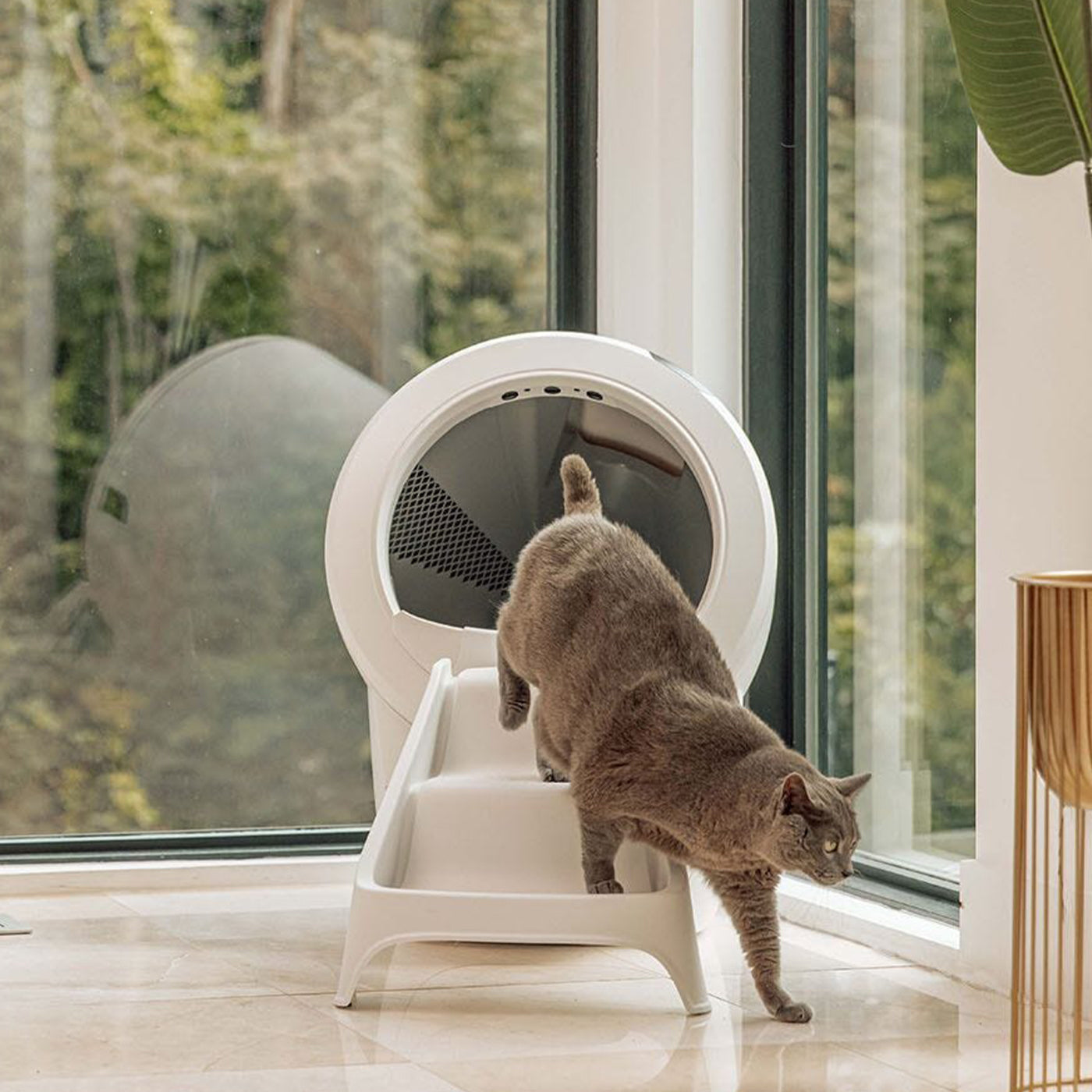

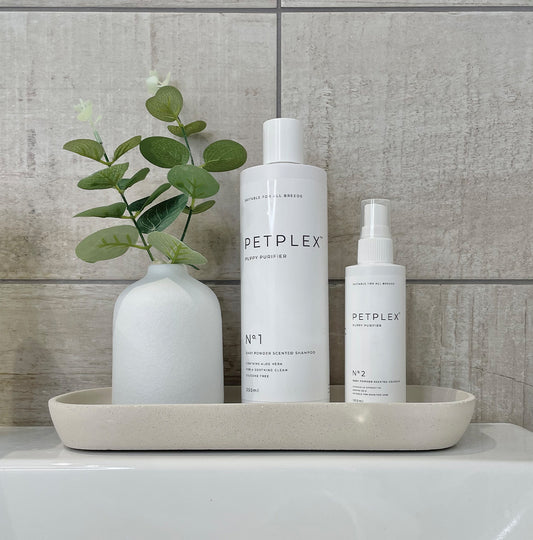
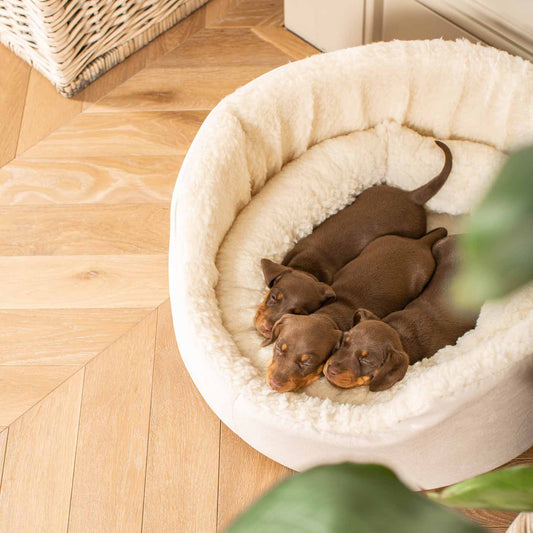
![[colour:mink boucle] Luxury Boucle Pet Scent Blanket collection, In Stunning Mink Boucle. The Perfect Blanket For Dogs, Available at Lords & Labradors](http://www.lordsandlabradors.co.uk/cdn/shop/products/Mink-Boucle-Scent-Blanket.jpg?v=1660130492&width=533)



